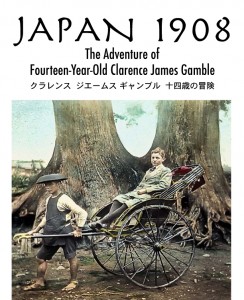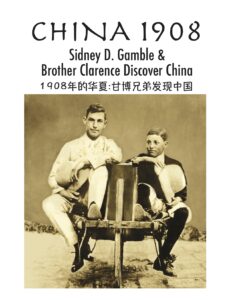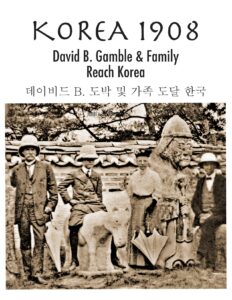The Orient Trilogy
Japan 1908 China 1908 Korea 1908
The Gamble House of Pasadena, California, was commissioned by David B. Gamble and Mary Huggins Gamble in 1907. In March 1908, construction was still ongoing, when the family—David and Mary, fourteen-year-old Clarence James Gamble and his older brother, seventeen-year-old Sidney David Gamble —left Cincinnati, Ohio, for a lengthy tour of Asia, which covered ten weeks in Japan, two weeks in China, and three weeks in Korea. Clarence and Sidney, enthusiastic young photographers that they were, took many photographs in each country; their photos give us a glimpse today of these very different cultures as seen by the travelling Gambles in 1908. Clarence also kept a Daily Journal with notes on the family activities. His first-hand descriptions of the sights and the people further explore the native cultures, already in transition, as Western industry encroaches, and his Journal introduce us also to the contribution of Protestant missionary activity in each country.
In 1908, with the beginnings of the Twentieth Century, we see emerging the developing seeds of the global technology-driven world of the Twenty-First Century, the loss of individualized culture, the increasing demand for conformity, the basis for the consumer society of today that supports self-indulgence and despises self-sufficiency.
The modernization of Japan—its new railroads and photography studios—did not dilute its rich cultural heritage, and in Japan 1908 Clarence describes performances in theatres and temples, a tea ceremony, and visits to century-old castles, shrines, and palaces.
China, too, as seen in China 1908, was in the process of becoming industrialized under Western influence; Shanghai was an up-to-date, modern city with telegraph, telephone, and streetcar, and the years immediately following the Boxer Rebellion found a vigorous China especially hospitable to Westerners and to the Gambles.
But Korea 1908 unfolds a time of great travail, three years after the ending of the Russo-Japanese War in 1905, two years before the Japanese annexation in 1910, and one year after the beginning of the Great Revival, the Korean Pentecost, which was ignited in Pyongyang in 1907 and vital through 1910. It was only as the Gambles left Korea that they began to understand the meaning there of the events that they had just witnessed.
Was Clarence Gamble aware of what he was witnessing as he wrote his Daily Journal entries in 1908? The vaunted Global Economy has greatly enriched the already wealthy and is stripping the masses of their nationhood and their personhood. The comfortable affluence of the Gambles and their education allowed them to see these changes in the making and to document them at a very personal level, even as they were unaware of their ramifications.



